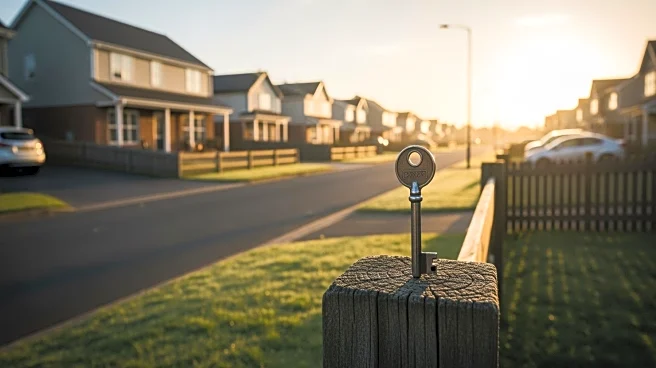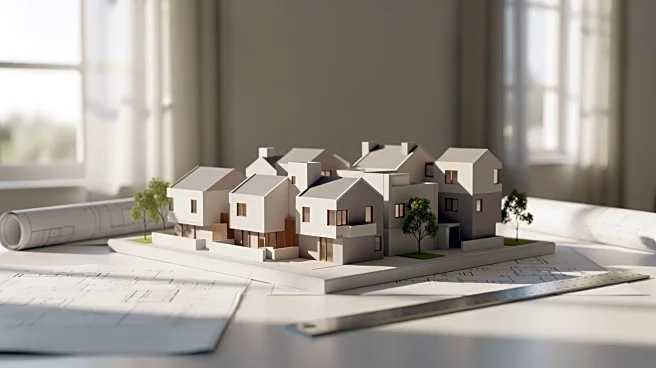What's Happening?
Realtor.com has released an analysis identifying ten metropolitan areas in the United States where the average home price remains under $300,000, despite the national median sales price reaching $415,200
in September 2025. This list includes cities such as Muncie, Indiana, with the lowest average home price at $178,250, and St. Louis, Missouri, with a median list price of $295,900. The analysis highlights the impact of increasing mortgage rates and home prices, which have made home ownership unaffordable for many Americans. The report suggests that these cities offer a balance between affordable housing and a desirable quality of life, aligning home prices more closely with local incomes.
Why It's Important?
The identification of cities with affordable housing options is significant as it provides potential homebuyers with alternatives amidst a challenging real estate market characterized by high prices and mortgage rates. This information is crucial for individuals and families seeking to purchase homes without exceeding their financial capabilities. The availability of affordable housing in these cities could influence migration patterns, as people may relocate to areas where they can achieve home ownership without financial strain. Additionally, this trend may impact local economies positively, as increased home purchases can stimulate economic activity and growth in these regions.
What's Next?
As home prices continue to rise nationally, it is likely that more individuals will consider relocating to these affordable cities. This could lead to increased demand in these areas, potentially driving up prices over time. Local governments and real estate developers may respond by investing in infrastructure and community amenities to accommodate the influx of new residents. Additionally, policymakers might focus on creating incentives or programs to maintain affordability and support sustainable growth in these regions.
Beyond the Headlines
The trend of seeking affordable housing in specific cities may have broader implications for urban planning and development. It could lead to shifts in demographic patterns, with younger families and first-time buyers moving to these areas. This movement might also influence cultural and social dynamics, as diverse populations integrate into these communities. Furthermore, the focus on affordability could prompt discussions on housing policies and the need for innovative solutions to address the challenges of home ownership in the current economic climate.













